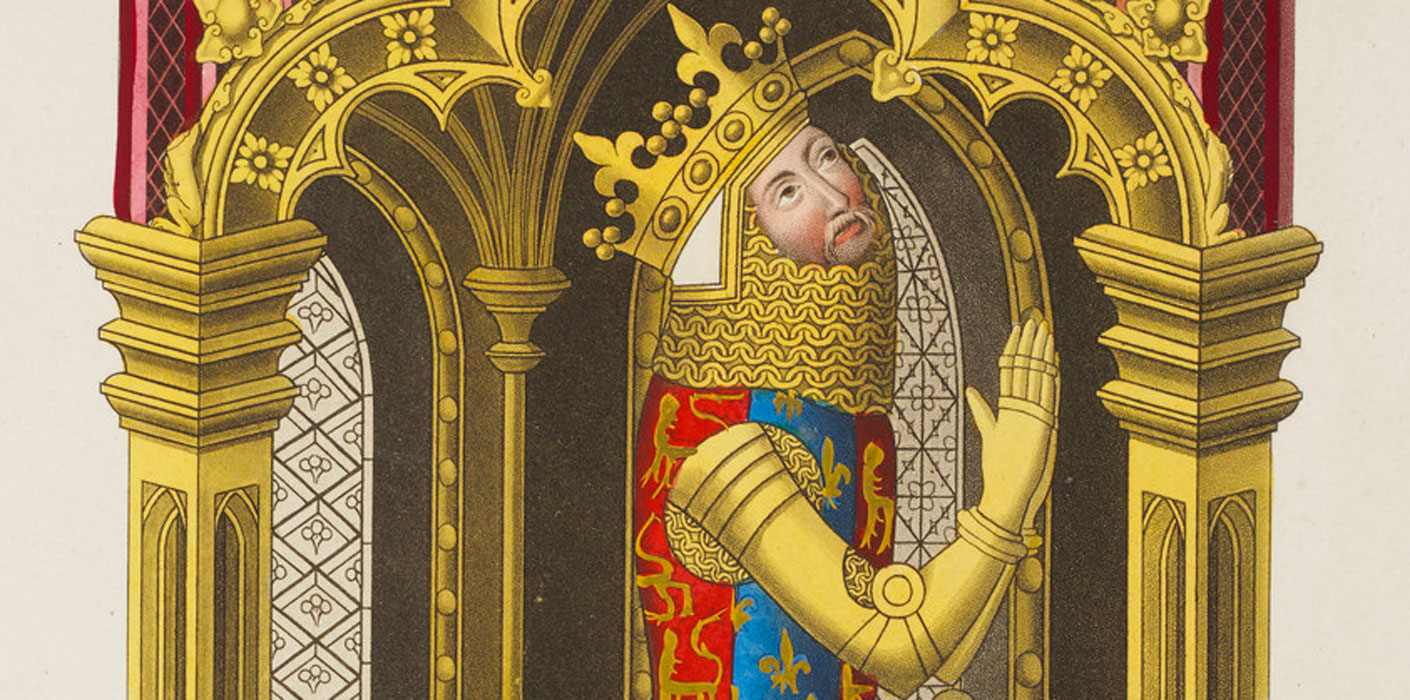Today is the 640th anniversary of the death at Sheen Palace on June 21 1377 of King Edward III. He was 65 and the longest lived English monarch until Queen Elizabeth I.
It is said that his mistress Alice Perrers snatched the rings from the dying kings hands when she realised what was happening. If the story is true it marks an undignified end to areign of just over fifty years and one mrked by signal victorie sin France and Scotland and was period crucial to the develiopment of English national identity. The King is buried in Westminster Abbey.
There is an online biography of the King at Edward III of England
The funeral effigy of King Edward III at Westminster Abbey
Image: westminster-abbey.org

The
King died of a stroke at Sheen Palace on 21 June 1377. A torch lit
procession accompanied the coffin which first stopped at St Paul's
cathedral. His funeral took place in the Abbey on 5 July and he was
buried near his wife's monument in the chapel of St Edward the
Confessor. His bones lie in the tomb chest
The
wooden effigy, which was carried at his funeral, is preserved in the
Abbey collection and the face (a plaster mask fixed to the wood,
slightly distorted on the left side of the mouth) is thought to be taken
from a death mask.
On his Purbeck
marble tomb is a gilt bronze effigy, with long hair and beard, which is
possibly by John Orchard. He wears his coronation robes and holds the
handles of two sceptres (the rest being broken off). He has small
buttons on his cuffs and decoration on his shoes. On the flat tomb top
are niches, some of which still hold small gilt angels. The pillow below
the king's head is a replacement from 1871 (given by Queen Victoria),
the original having been lost. The lion at his feet (shown in an
engraving of 1677) has now gone. The inscription can be translated:
"Here
is the glory of the English, the paragon of past kings, the model of
future kings, a merciful king, the peace of the peoples, Edward the
third fulfilling the jubilee of his reign, the unconquered leopard,
powerful in war like a Maccabee. While he lived prosperously, his realm
lived again in honesty. He ruled mighty in arms; now in Heaven let him
be a king".
Originally there were
bronze weepers (or statuettes) of twelve of his children round the tomb
but only six of these now remain on the south side - Edward the "Black Prince", Edmund of Langley, William of Hatfield, Lionel of Antwerp, Mary of Brittany and Joan of the Tower.
(Those that are now missing were to Isabel, Dame de Couci, William of
Woodstock, John of Gaunt, Blanche of the Tower, Margery Countess of
Pembroke and Thomas Duke of Gloucester, with their enamelled coats of
arms below).
Above the tomb is an
elaborate wooden tester by Hugh Herland. The arches terminate in
half-angels as pendants. The soffit has a rich ribbed vault of six bays
with cusping and bosses carved with human and beast-heads, many of which
are missing. Four large enamelled shields (showing the cross of St
George and the arms of France and England quarterly) remain on the south
side of the tomb chest.
A state sword, seven feet long, was
traditionally associated with this king and was kept near his tomb for
many centuries. Also a shield covered with canvas and black leather, now
much mutilated.
During the Great War the effigy was stored in the
crypt of the Chapter House. Both effigy and tester were evacuated to a
country house during the Second World War.
Tomb dimensions in metres: length 2.90. width 1.35. height 1.70.
The funeral effigy, state sword and the shield will be on show in the new Jubilee Galleries, due to open in mid 2018.
From the Westmister Abbey website
King Edward III
The tomb effigy in Westminster Abbey
Image westminster-abbey.org

King Edward III from the paintings in St Stephen's Chapel in the old Palace of Westminster and dated to the early 1360s
Image: royal.uk
He was succeeded by his grandson King Richard II.


No comments:
Post a Comment